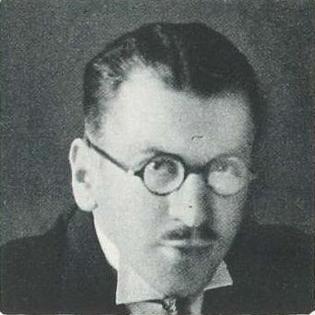
The Twickenham by-election, 1929 was a parliamentary by-election held on 8 August 1929 for the British House of Commons constituency of Twickenham in Middlesex.
The Newport by-election, 1956 was a parliamentary by-election held on 6 July 1956 for the British House of Commons constituency of Newport in Monmouthshire.
The Gateshead by-election, 1931 was a parliamentary by-election held on 8 June 1931 for the British House of Commons constituency of Gateshead.
The Liverpool Exchange by-election, 1933 was a by-election held for the British House of Commons constituency of Liverpool Exchange in Liverpool on 19 January 1933. It was won by the Conservative Party candidate John Shute.
The Liverpool Wavertree by-election, 1935 was a by-election held in England for the House of Commons constituency of Liverpool Wavertree on 6 February 1935. It was won by the Labour Party candidate Joseph Cleary.
The Montgomeryshire by-election, 1962 was a parliamentary by-election held on 15 May 1962 for the British House of Commons constituency of Montgomeryshire.
The Berwick-upon-Tweed by-election, 1941 was a parliamentary by-election held on 18 August 1941 for the British House of Commons constituency of Berwick-upon-Tweed.
The Westminster Abbey by-election, 1939 was a parliamentary by-election held on 17 May 1939 for the British House of Commons constituency of Westminster Abbey in London.

The North Cornwall by-election, 1932 was a parliamentary by-election held on 22 July 1932 for the British House of Commons constituency of North Cornwall.

The St Ives by-election, 1928 was a by-election held on 6 March 1928 for the British House of Commons constituency of St Ives in Cornwall.
Jacob Henry Tillett was an English Liberal Party politician who sat in the House of Commons variously between 1870 and 1885.
The Merthyr Tydfil by-election, 1915 was a parliamentary by-election held on 25 November 1915 for the British House of Commons constituency of Merthyr Tydfil in Glamorganshire, Wales.
The Holderness by-election, 1939 was a parliamentary by-election held on 15 February 1939 for the British House of Commons constituency of Holderness in the East Riding of Yorkshire.
The Batley and Morley by-election, 1939 was a parliamentary by-election held in the United Kingdom on 9 March 1939 for the House of Commons constituency of Batley and Morley in the West Riding of Yorkshire.
The Hythe by-election, 1939 was a parliamentary by-election held on 20 July 1939 for the British House of Commons constituency of Hythe.
The Inverness-shire by-election, 1917 was a parliamentary by-election held for the House of Commons constituency of Inverness-shire in the Scottish Highlands on 2 January 1917.
The Norwich by-election was a Parliamentary by-election. It returned two Members of Parliament to the House of Commons of the United Kingdom, elected by the first past the post voting system.
The Lancaster by-election, 1941 was a parliamentary by-election for the British House of Commons constituency of Lancaster, Lancashire on 15 October 1941.
The Combined English Universities by-election, 1937 was a parliamentary by-election for the British House of Commons dual member constituency of the Combined English Universities 22 March 1937.







